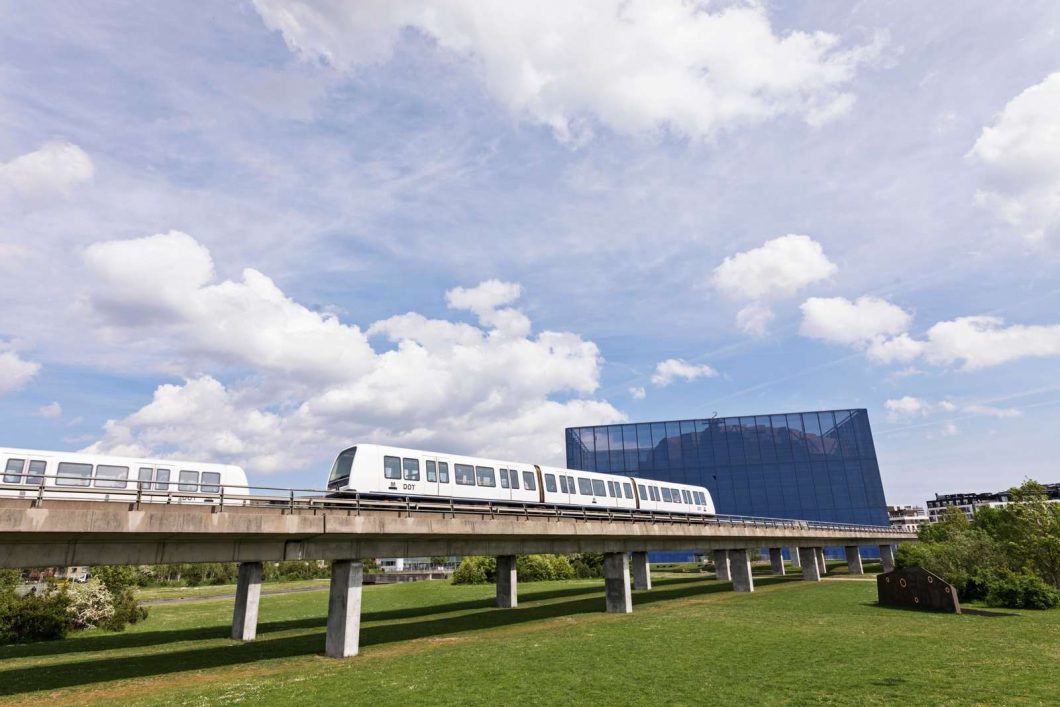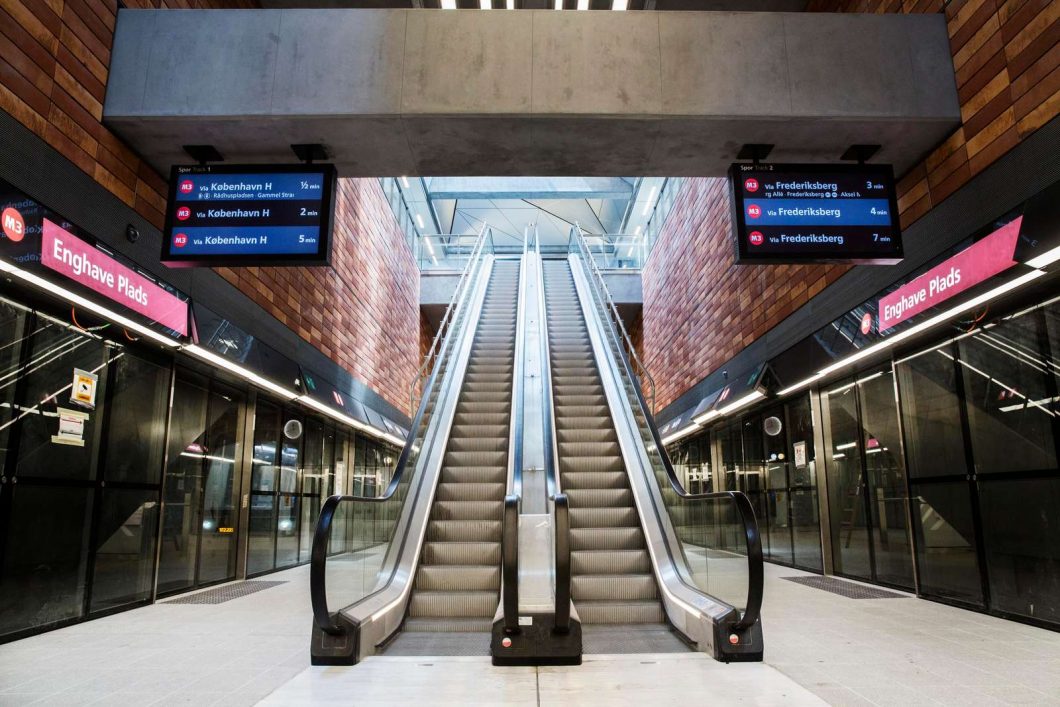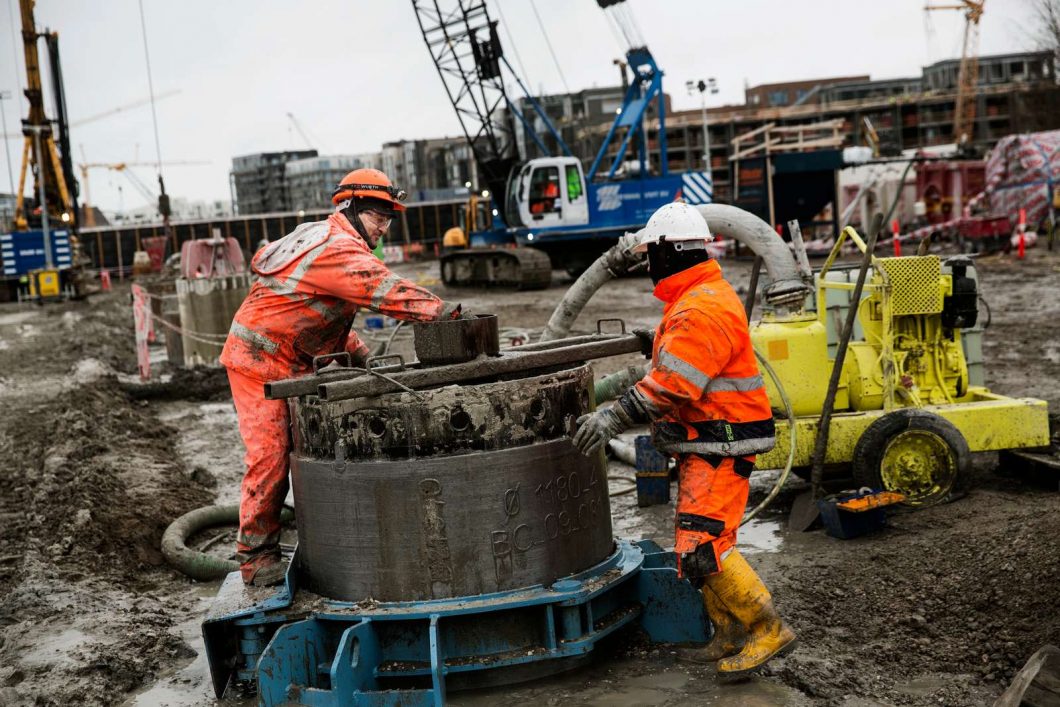Help us improve your experience. See content that is made for you!
See how IBM increased their efficiency by up to 30%!

Help us improve your experience. See content that is made for you!
See how IBM increased their efficiency by up to 30%!


Copenhagen’s Metro, with as little as two minutes between driverless trains and a high reliability, has been voted the best metro in the world on numerous occasions. The Metro is a sustainable, fast and safe way to get around Copenhagen, and daily about 360,000 passengers travel with it. Since opening in 2002, over 1 billion passengers have travelled in the city by Metro.
Copenhagen is one of the most densely populated areas of Denmark. Establishing stations thirty to forty metres underground and building these in between fragile mediaeval buildings is not an easy task. And since its opening in 2002, the metro has been expanding. In 2019, the M3 Cityringen opened. The new Metro line consists of 17 new stations in central Copenhagen creating a stronger public transport network with the aim to reduce congestion in the city and aid mobility.
Plans to ease the flow of movement within Copenhagen are developing at pace and the metro network plays a key role in the city’s drive to become carbon neutral by 2025. The network will be extended to Nordhavn and Sydhavn in the coming years. Five additional metro stations will be constructed in Sydhavn which will be added to the current M4 line. This means the southern part of Copenhagen will be linked to the metro system, establishing a truly connected transport system for those who live and visit the Danish city.

Joe Rasmussen, Project Manager for Copenhagen Metro, explains that the Metro’s plans for expansion also align with their company vision of digitalising for more efficient ways of working: “Our manual processes are time consuming and inefficient when it comes to design and construction.” The company decided they wanted to invest in construction technology to not only overhaul their ways of working but to provide increased transparency to their project partners and improve the way in which they collaborate with their supply chain.
“Our current systems struggle with the processes we use,” reflects Joe. “We are unable to collaborate on shared documents with internal and external project team members which means we spend a lot of time working in 2D,” says Joe. The team uses 2D drawings which are printed and manually marked up with changes or issues as well as spreadsheets to manage certain workflows.
Copenhagen Metro made the decision to invest in Autodesk Construction Cloud’s Autodesk Build, Collaborate and Assemble solutions to digitalise their current workflows with the goal of growing and automating these in the future. The extension of the M4 metro line to Nordhavn and Sydhavn will be the first project that the Autodesk Construction Cloud will be used on. “To get started, we will roll out the technology on a phase-by-phase basis to workflows on the project,” says Joe.
For Copenhagen Metro, using an iterative approach to transforming their construction processes will help to minimise disruption to current projects while allowing project team members to learn from each other. “We’re really looking forward to creating efficiencies on this project by using digital technology and digital workflows,” says Joe. “Not only will this speed up our current ways of working but it will allow us to provide more transparency to all project collaborators including the Municipality of Copenhagen and Danish government who oversee our activity.”

The long-term plan for Copenhagen Metro is to use Autodesk’s Construction Cloud as their common data environment on all new construction projects. This will save time for the project team, improve communication through more collaborative working practices and create enhanced connectivity on site. This means printing of manual drawings will no longer be required, helping to reduce the company’s carbon footprint and minimise waste. Creating a more sustainable and efficient business fit for the future is a key priority for the team. “Eventually we would like to integrate solutions like GIS mapping and our Microsoft suite for truly connected ways of working,” reflects Joe. “We also see Autodesk Build as being a key component in allowing us to automate some of our repetitive workflows which will save us time and reduce risk as sometimes these processes are open to human error,” says Joe.
The common data environment will also allow Copenhagen Metro to better manage their assets in the longer term. Capturing important project information related to the construction of these stations and the metro line means that the team can create predictive maintenance schedules in the future. And for the people of Copenhagen, a connected construction journey will deliver a more connected city for the future.

May we collect and use your data?
Learn more about the Third Party Services we use and our Privacy Statement.May we collect and use your data to tailor your experience?
Explore the benefits of a customized experience by managing your privacy settings for this site or visit our Privacy Statement to learn more about your options.